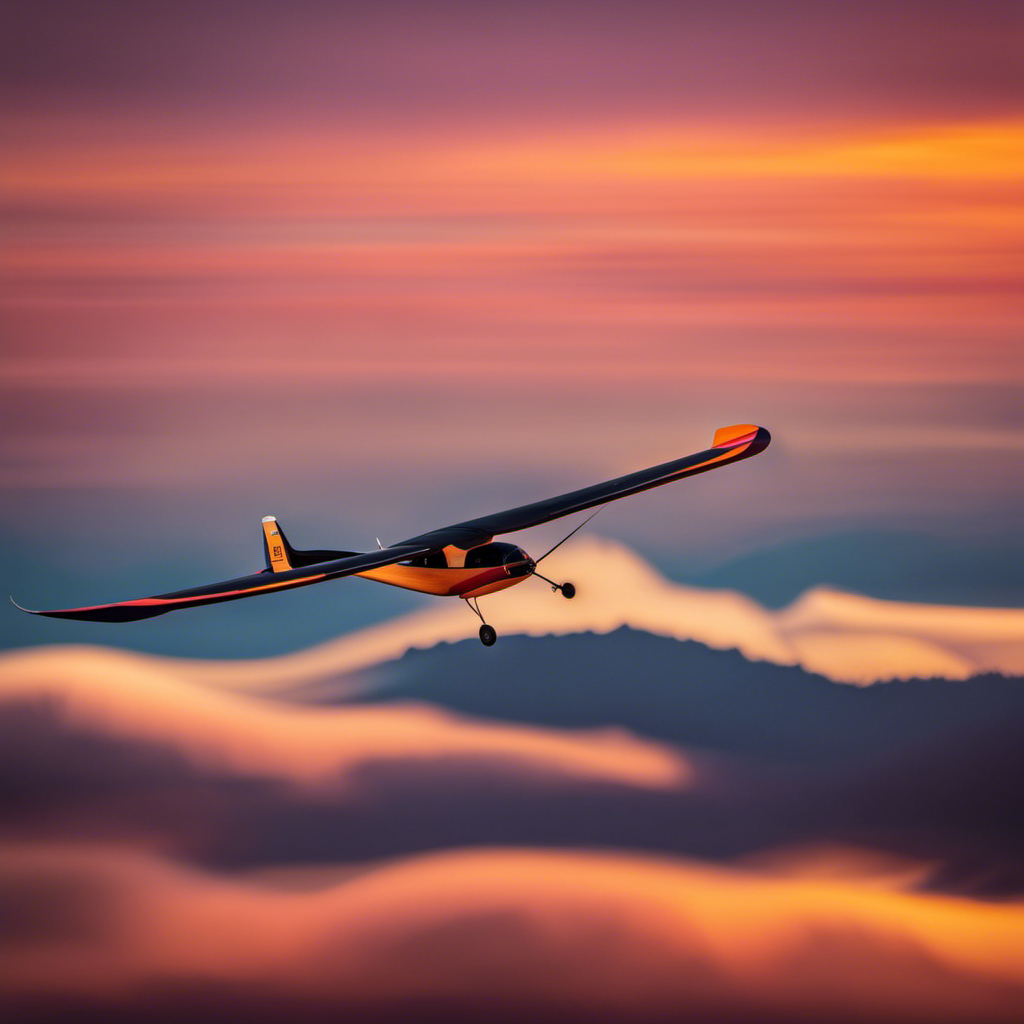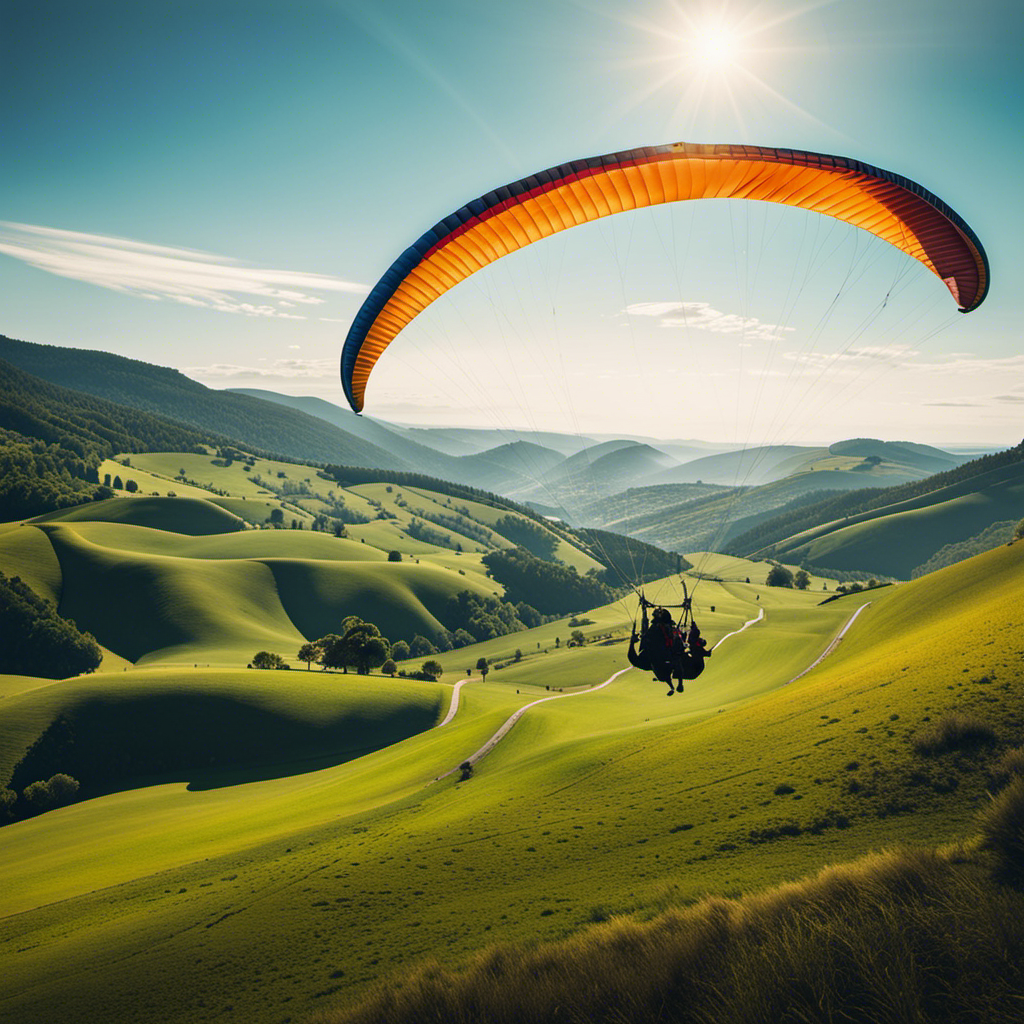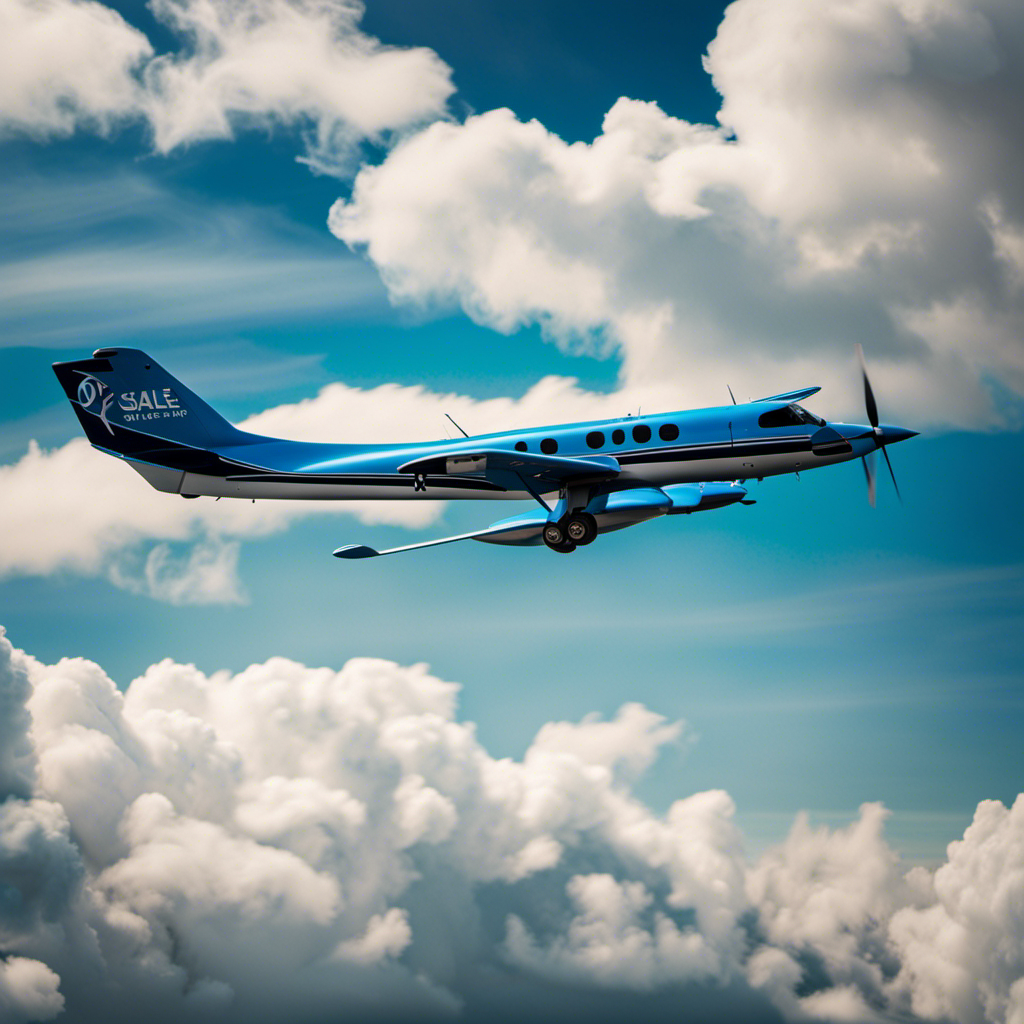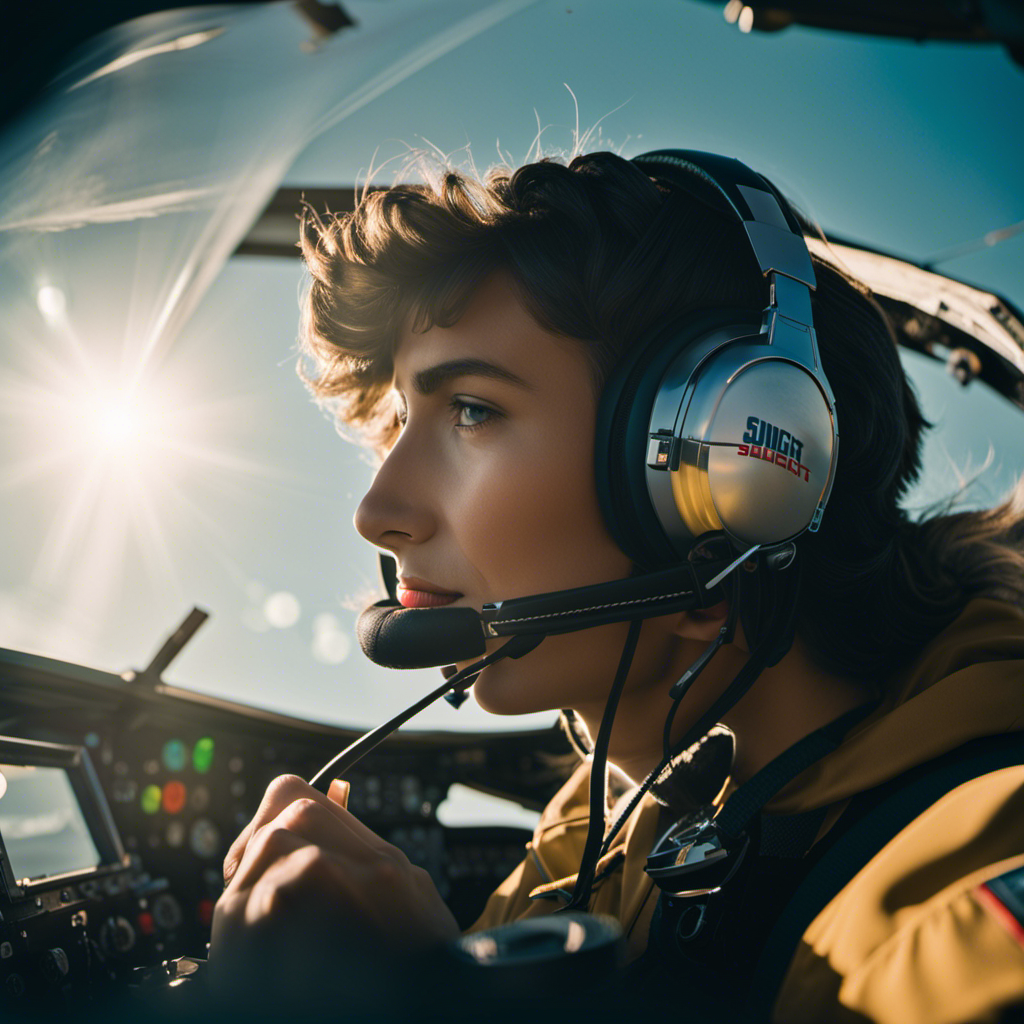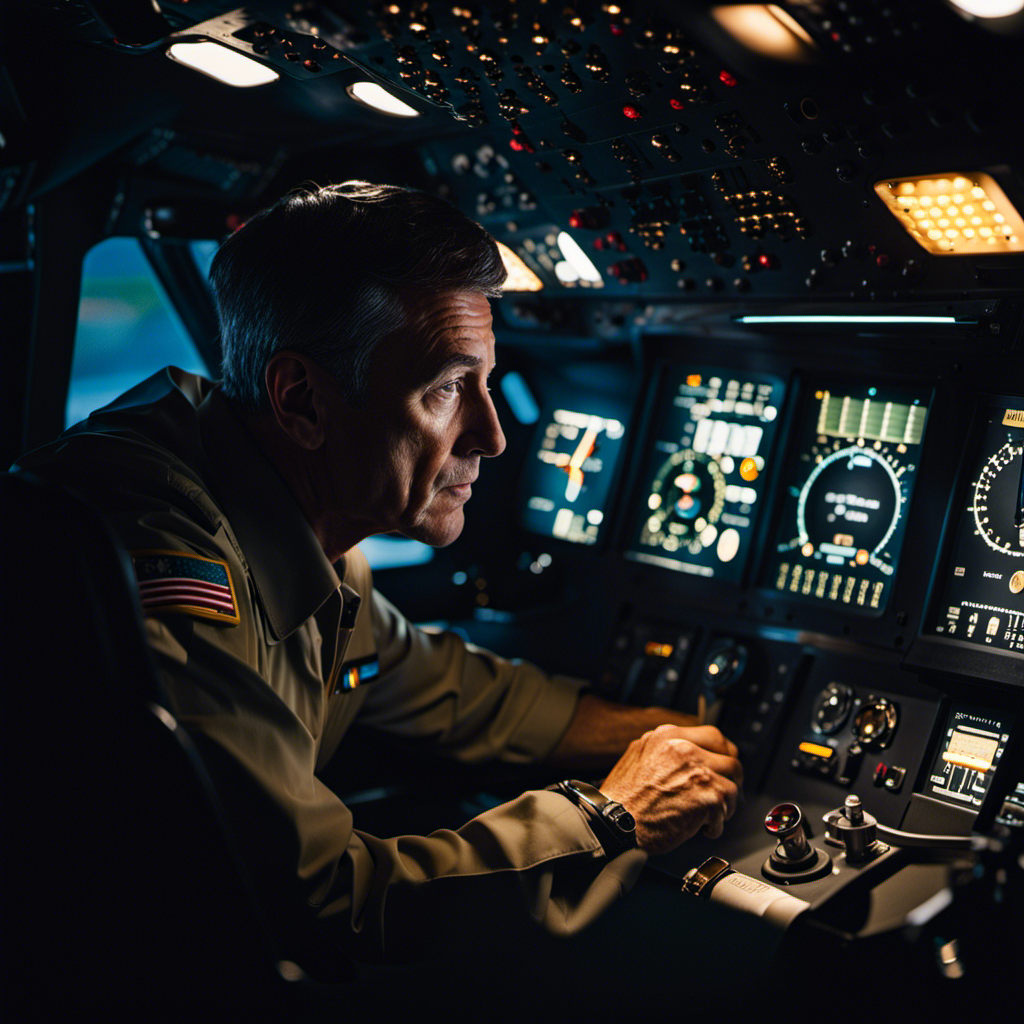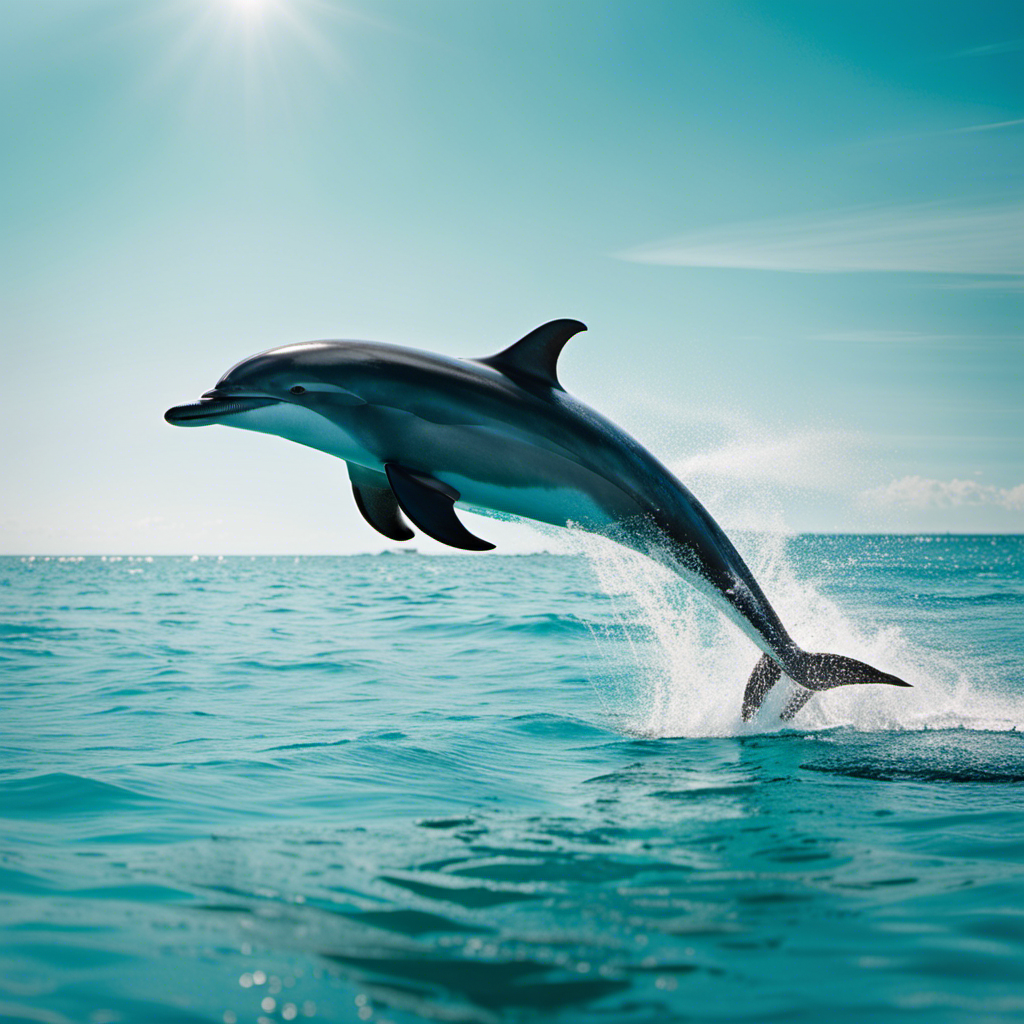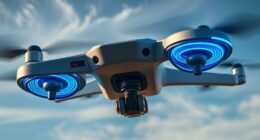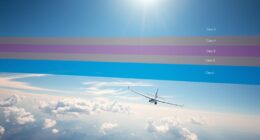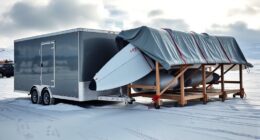Do you ever wonder if gliding should be considered a form of flying?
In this article, I will delve into the definitions, characteristics, and physics behind gliding and flying. We will explore the different types of gliders and discuss the debate surrounding whether gliding can truly be categorized as flying.
Additionally, we will examine the benefits and challenges of gliding.
By the end, we will determine whether gliding can be rightfully classified as flying.
So, let’s soar into the world of gliding and find out the truth behind this captivating aerial activity.
Key Takeaways
- Gliding is a form of flight that relies on physics and aerodynamics, while flying involves the use of engines or propellers for propulsion.
- Gliders use air currents and thermal updrafts to stay aloft, while birds generate lift through wing shape and flapping.
- Gliders have limited control and maneuverability compared to powered aircraft, but birds can change direction and conserve energy through gliding.
- Gliding relies on gravity and air currents, and manipulating these air currents generates lift to counteract gravity.
Definition of Gliding and Flying
Do you know the difference between gliding and flying?
Gliding is the process of moving through the air without any additional propulsion. It relies on the physics of gliding and the aerodynamics of the glider to maintain its motion. When a glider is in flight, it utilizes the surrounding air currents and thermal updrafts to stay aloft. The wings of a glider are designed to generate lift, allowing it to stay in the air for extended periods of time.
On the other hand, flying involves the use of engines or propellers to generate thrust and maintain forward motion. While both gliding and flying involve moving through the air, the main distinction is the reliance on external forces versus self-propelled motion.
Characteristics of Flying
Birds can soar through the air effortlessly due to their unique wing structure and the way they manipulate air currents. Here are four key characteristics of flying:
-
Lift: Birds generate lift by creating a pressure difference between the upper and lower surfaces of their wings. This lift force allows them to stay airborne.
-
Wing shape: Birds have specialized wings that are curved on top and flat underneath. This shape helps to create lift and reduces drag.
-
Wing flapping: Birds use a combination of flapping and gliding techniques to maintain flight. Flapping provides thrust and allows them to change direction, while gliding conserves energy.
-
Air currents: Birds take advantage of updrafts and thermals, which are columns of warm air rising from the ground, to gain altitude and stay airborne for longer periods.
Characteristics of Gliding
When it comes to gliding, there are several key points to consider.
Firstly, gliding relies on the use of gravity and air currents to maintain flight.
Secondly, gliders have limited control and maneuverability compared to powered aircraft.
Lastly, gliders lack propulsion, meaning they rely solely on their initial launch and the natural forces of flight to stay airborne.
These factors contribute to the unique characteristics and challenges of gliding as a form of aviation.
Use of Gravity and Air Currents
Gliding utilizes the force of gravity and air currents to stay aloft. When gliding, gravity acts as the primary force pulling the glider downwards. However, by carefully manipulating air currents, gliders can generate lift, allowing them to counteract the force of gravity and maintain altitude.
The interaction between the glider’s wings and the air creates the lift force. Air currents, such as thermal updrafts and ridge lift, play a crucial role in gliding. Thermal updrafts are rising columns of warm air that gliders can ride to gain altitude. Ridge lift occurs when wind encounters a hill or mountain, causing it to rise and create lift. These air currents are essential for gliders to achieve and sustain flight.
Moving on to the next section about limited control and maneuverability, it is important to consider the challenges faced by gliders in controlling their flight path without relying on engines or propellers.
Limited Control and Maneuverability
To navigate through the air without the aid of engines or propellers, I must rely on subtle adjustments of my body and wings to control my flight path and make maneuvers.
Gliding is a form of flight that utilizes the principles of aerodynamics and the sources of lift to stay aloft. By understanding the way air flows over my wings and body, I can generate lift and maintain altitude. By altering the shape and angle of my wings, I can adjust the amount of lift and control my direction.
However, gliding has its limitations. Unlike powered flight, I lack propulsion, which means I cannot generate additional thrust to increase speed or climb. Instead, I must rely on the natural forces of gravity and air currents to sustain my flight.
Lack of Propulsion
Without propulsion, I’ve got to rely on the forces of nature to keep me flying. Gliding, which is a type of flying, makes use of aerodynamics to stay up in the air. As I glide through the sky, there are a few important factors that come into play.
Firstly, there’s lift. By shaping my wings and adjusting the angle of attack, I can generate lift that counteracts the force of gravity and keeps me airborne.
Next, there’s drag. The air pushing against my body creates resistance, which needs to be minimized in order to glide efficiently.
Another crucial factor is the glide ratio. This ratio determines how far I can travel horizontally for every unit of vertical descent. It’s influenced by things like wing design and air density.
While gliding allows for a graceful flight, it also has implications for wildlife. Birds and other gliders can disturb natural habitats and disrupt the behavior of other animals. Additionally, collisions with structures or vehicles can pose a threat to both gliders and wildlife.
Now, let’s transition into the next section, where we’ll delve into the physics behind gliding. It’s important to understand the intricate mechanisms that enable this form of flight.
Physics Behind Gliding
The physics behind gliding involves understanding the principles of lift and drag. Gliders rely on the principles of aerodynamics to stay aloft.
Lift is the upward force that counteracts the weight of the glider, allowing it to stay in the air. It is generated by the shape of the wings and the airflow over them.
Drag, on the other hand, is the resistance the glider experiences as it moves through the air. It is caused by factors such as air friction and the shape of the glider’s body.
By carefully controlling lift and drag, glider pilots are able to sustain flight without the need for an engine. Understanding these principles is crucial for mastering the art of gliding.
Transitioning into the subsequent section about ‘types of gliders’, it is important to explore the different designs and configurations that allow gliders to achieve different flight characteristics.
Types of Gliders
When it comes to gliding, there are three main types of gliders: hang gliders, sailplanes, and paragliders.
Hang gliders are foot-launched aircraft that use a flexible wing and a control bar to maneuver through the air.
Sailplanes, also known as gliders, are fixed-wing aircraft that are designed for soaring and can be launched using a variety of methods.
Paragliders, on the other hand, are lightweight, free-flying aircraft that are typically launched by running off a hill or by being towed into the air.
Hang Gliders
You can experience the thrill of flying by piloting hang gliders. Hang gliders are a type of glider that are designed to be flown by the pilot hanging from a frame.
Safety is of utmost importance when it comes to hang gliding. Pilots must undergo thorough training and follow strict safety protocols to ensure a safe flight. In addition, regular maintenance and inspections of the hang glider are necessary to identify any potential issues and prevent accidents.
Hang gliding competitions are also a popular aspect of this sport. These events allow pilots to showcase their skills and compete against each other in various categories such as distance, speed, and accuracy. Hang gliding competitions not only promote friendly competition but also drive innovation in glider design and performance.
Moving on to sailplanes…
Sailplanes
Sailplanes, also known as gliders, offer a unique experience of soaring through the sky without an engine. These sleek, aerodynamic aircraft rely solely on the forces of nature to stay aloft. The physics of flight play a crucial role in their operation. Lift, generated by the wings as they move through the air, counteracts the force of gravity.
Safety considerations are paramount in sailplane flying. Pilots must carefully analyze weather conditions, including wind speed and direction, to ensure a safe flight. Additionally, they must be skilled at reading the subtle changes in the air currents to maximize lift and minimize drag.
Sailplanes provide a serene and exhilarating experience, gliding gracefully through the sky.
Now, let’s shift our focus to paragliders, another exciting form of non-motorized flight.
Paragliders
After exploring the world of sailplanes, it is time to delve into the realm of paragliders. Paragliding is a recreational and competitive sport that involves flying a lightweight, free-flying aircraft called a paraglider. This aircraft consists of a fabric wing with a harness suspended below, allowing the pilot to sit and control the glider using weight-shifting and brake toggles.
Paragliders are designed to be portable and easy to transport, making them an ideal choice for those who want to experience the thrill of flying in different locations. When it comes to paragliding safety, it is crucial to have the right equipment, including a reserve parachute, helmet, and appropriate clothing. Additionally, regular inspections and maintenance of the paragliding equipment are essential for ensuring optimal safety.
With this understanding of paragliding, let us now dive into the similarities between gliding and flying.
Similarities Between Gliding and Flying
Gliding and flying share many similarities. Both activities involve the use of aerodynamics to generate lift and stay airborne. Here are three key similarities between gliding and flying:
-
Both gliders and airplanes rely on the same principles of aerodynamics to generate lift. By creating a pressure difference between the upper and lower surfaces of their wings, both gliders and airplanes can stay aloft.
-
Gliders and airplanes both require a forward motion to maintain lift. They achieve this by using engines or by harnessing natural sources of lift, such as thermals or ridge lift.
-
Both gliding and flying provide a sense of freedom and exhilaration. Whether you’re soaring through the sky in a glider or piloting a plane, the experience of being airborne is truly awe-inspiring.
While gliding and flying share many similarities, there are also notable differences between the two. Let’s explore these differences in the next section.
Differences Between Gliding and Flying
When it comes to differences between gliding and flying, there are several key points to consider.
First, the source of lift differs between the two. In gliding, lift is primarily generated by the natural forces of the atmosphere, such as thermals and updrafts. In flying, on the other hand, lift is generated by the propulsion system of the aircraft.
Second, control and maneuverability also differ. In gliding, control is mainly achieved through adjustments in the aircraft’s attitude and weight distribution. In flying, control is achieved through a combination of control surfaces and the aircraft’s propulsion system.
Source of Lift
Do you know where the source of lift comes from while gliding?
When it comes to gliding, the key factors at play are gravity and lift. Gravity is what pulls us down towards the Earth, while lift is the force that counteracts gravity and allows us to stay in the air.
Lift is generated due to the principles of aerodynamics. As air flows over the wings of the glider, it creates a difference in pressure. The shape of the wings, along with their angle of attack, helps to create this pressure difference. This pressure difference results in an upward force that is known as lift.
Understanding the source of lift is crucial in grasping the concept of gliding. Now, let’s move on to the next section and explore the control and maneuverability of gliders.
Control and Maneuverability
To control and maneuver a glider, you need to use a combination of the control surfaces and adjust them accordingly. The control surfaces of a glider include the ailerons, elevator, and rudder. The ailerons are responsible for controlling the roll of the aircraft, the elevator controls the pitch, and the rudder controls the yaw. By manipulating these surfaces, a pilot can make precise adjustments to the glider’s flight path.
One of the advantages of gliding is its ability to stay aloft without the use of an engine, making it a more environmentally friendly and cost-effective form of flying. However, safety measures are essential in gliding to ensure the well-being of the pilot and passengers. These measures include thorough pre-flight inspections, adherence to weight and balance limits, and following established procedures for takeoff, landing, and emergency situations.
Speed and Distance Covered
You can achieve impressive speeds and cover great distances in a glider. Gliders are designed to maximize their efficiency in the air, allowing them to soar gracefully through the sky.
The speed at which a glider can travel depends on a variety of factors, such as the design of the aircraft and the skill of the pilot. By utilizing specific gliding techniques, such as ridge soaring or thermal soaring, gliders can harness the power of the wind and achieve impressive speeds.
However, it’s important to note that while gliders can reach high speeds, they are limited in their distance covered. Unlike powered aircraft, gliders rely solely on the natural forces of the atmosphere to stay airborne, which can restrict their ability to travel long distances.
Despite this limitation, gliders are still able to cover significant distances and provide a thrilling flying experience.
Now that we’ve explored the speed and distance capabilities of gliders, let’s delve into the ongoing debate on whether gliding is considered flying.
Debate on Whether Gliding is Flying
Different perspectives and opinions, scientific and technical considerations, and legal and regulatory definitions are three key points that shape the debate on whether gliding is considered flying.
From a technical standpoint, gliding involves maintaining altitude and forward motion through the use of air currents, while flying typically involves propulsion. However, opinions on this matter may vary, with some arguing that gliding should be classified as a form of flying due to its ability to sustain flight.
Additionally, legal and regulatory definitions play a role in determining how gliding is classified, as different jurisdictions may have varying definitions and regulations surrounding this topic.
Different Perspectives and Opinions
There’s a wide range of perspectives and opinions on whether gliding is considered flying. The debate stems from various scientific considerations and legal definitions.
Some argue that gliding should not be classified as flying because it lacks the ability to sustain level flight or generate its own thrust. They believe that true flight requires the use of engines or propulsion systems.
However, others contend that gliding meets the criteria of flight as it involves the movement through the air and the control of an aircraft. Gliding offers unique benefits, such as a quieter and more environmentally friendly form of aviation, but it also presents challenges, including the reliance on favorable weather conditions and limited flying range.
Transitioning into the subsequent section, further examination of the scientific and technical considerations will shed light on this ongoing debate.
Scientific and Technical Considerations
To understand the scientific and technical aspects of classifying gliding as flight, it’s important to examine factors such as sustained level flight and the ability to generate thrust.
Gliding, despite lacking an engine, can indeed be considered a form of flight due to the following reasons:
-
Gravity and Aerodynamics: Gliders rely on the force of gravity to generate potential energy, which is then converted into kinetic energy as they descend. This energy is then harnessed through precise control surfaces to manipulate aerodynamic forces and maintain flight.
-
Flight Mechanics: Gliders utilize the same flight mechanics as powered aircraft, including lift, drag, and weight. By carefully managing these forces, gliders can achieve and sustain flight.
-
Aerodynamic Forces: Gliders generate lift through the shape of their wings, exploiting the principles of Bernoulli’s principle and Newton’s third law of motion. This allows them to counteract the force of gravity and remain airborne.
-
Sustained Level Flight: Gliders are capable of maintaining sustained level flight for extended periods, similar to powered aircraft, by utilizing the available sources of lift and managing their energy efficiently.
Considering these scientific and technical aspects, it becomes clear that gliding is a legitimate form of flight, even without an engine. From here, we can delve into the legal and regulatory definitions surrounding gliding.
Legal and Regulatory Definitions
As we delve into the legal and regulatory definitions of gliding, it is important to understand the framework that governs this exhilarating activity.
Gliding regulations are established to ensure the safety and efficiency of glider operations and to harmonize them with existing aviation standards. These regulations cover a wide range of aspects, such as pilot licensing, aircraft maintenance, and air traffic control procedures specific to gliders.
Compliance with these regulations is essential to maintain the integrity of gliding operations and to ensure the safety of pilots and other airspace users. By adhering to established aviation standards, gliding organizations can operate within a structured framework and foster a culture of safety and professionalism.
Now, let’s explore the benefits and challenges of gliding, shedding light on the unique experiences and considerations that come with this remarkable activity.
Benefits and Challenges of Gliding
Gliding offers you a unique experience of flight and presents both benefits and challenges.
One of the major benefits of gliding is the incredible sensation of freedom and serenity as you soar through the sky without the noise and vibration of an engine. Gliders allow you to connect with nature and experience the beauty of the world from a different perspective. Additionally, gliding can be a more cost-effective way to fly compared to traditional powered aircraft.
However, gliding also comes with its own set of challenges. One of the main challenges is the dependence on atmospheric conditions for lift. Weather plays a crucial role in determining the success and duration of a glider flight. Furthermore, gliders require skillful piloting techniques to maximize efficiency and maintain safety.
Despite these challenges, gliding remains a popular and exhilarating activity for aviation enthusiasts.
Conclusion: Is Gliding Considered Flying?
You may be wondering if gliding is actually considered a form of flight. The debate on the definition of gliding has sparked philosophical implications and discussions among aviation enthusiasts. To better understand this debate, let’s examine some key factors in a table format:
| Criteria | Gliding | Flying |
|---|---|---|
| Propulsion | None, relies on gravity | Requires propulsion system |
| Sustained Duration | Yes, can stay airborne for extended periods | Depends on fuel capacity |
| Control | Limited, relies on air currents and pilot skills | Extensive control options available |
As we can see, gliding shares similarities with flying but also has distinct differences. While it lacks propulsion and relies on the forces of nature, gliding can sustain flight for extended periods. The level of control in gliding is also different, as it requires skilled piloting to navigate through air currents. Ultimately, whether gliding is considered a form of flight depends on one’s perspective and the specific definition used. The philosophical implications of gliding bring forth questions about the essence and boundaries of flight itself.
Frequently Asked Questions
Are there any safety concerns associated with gliding?
Yes, there are safety concerns associated with gliding. Safety regulations, such as regular inspections and maintenance of gliders, and training requirements, including pilot certification and emergency procedures, help mitigate these risks and ensure safe gliding operations.
How does gliding differ from other types of aviation, such as powered flight?
Gliding differs from powered flight in that it relies solely on the natural forces of lift and gravity to stay airborne. This absence of an engine provides advantages such as lower operating costs and a quieter, more serene flying experience.
Can gliders reach the same altitudes as airplanes?
No, gliders have altitude limitations compared to airplanes. Gliding relies on natural forces to stay aloft, while powered flight allows for greater control and the ability to reach higher altitudes.
What are the main challenges faced by glider pilots?
The main challenges faced by glider pilots include weather conditions, thermals, finding lift, and maintaining control in turbulent air. Skills development in gliding involves mastering these challenges and learning efficient flying techniques.
Are there any specific regulations or licenses required for gliding?
To operate a glider, specific regulations and licenses are required. These ensure the safety and competency of glider pilots. It is important to comply with these requirements to legally and safely enjoy the exhilarating experience of gliding.
Conclusion
In conclusion, after examining the characteristics of gliding and flying, it is clear that gliding is not considered flying in the strict sense.
While both activities involve the movement through the air, gliding relies solely on the forces of gravity and air currents to maintain flight, whereas flying involves the use of engines or propulsion systems.
According to a study conducted by the International Gliding Commission, gliding accidents have a fatality rate of 0.0035%, which is significantly lower than the fatality rate for powered aviation.
This statistic highlights the safety and thrill of gliding, making it an enticing activity for aviation enthusiasts.
